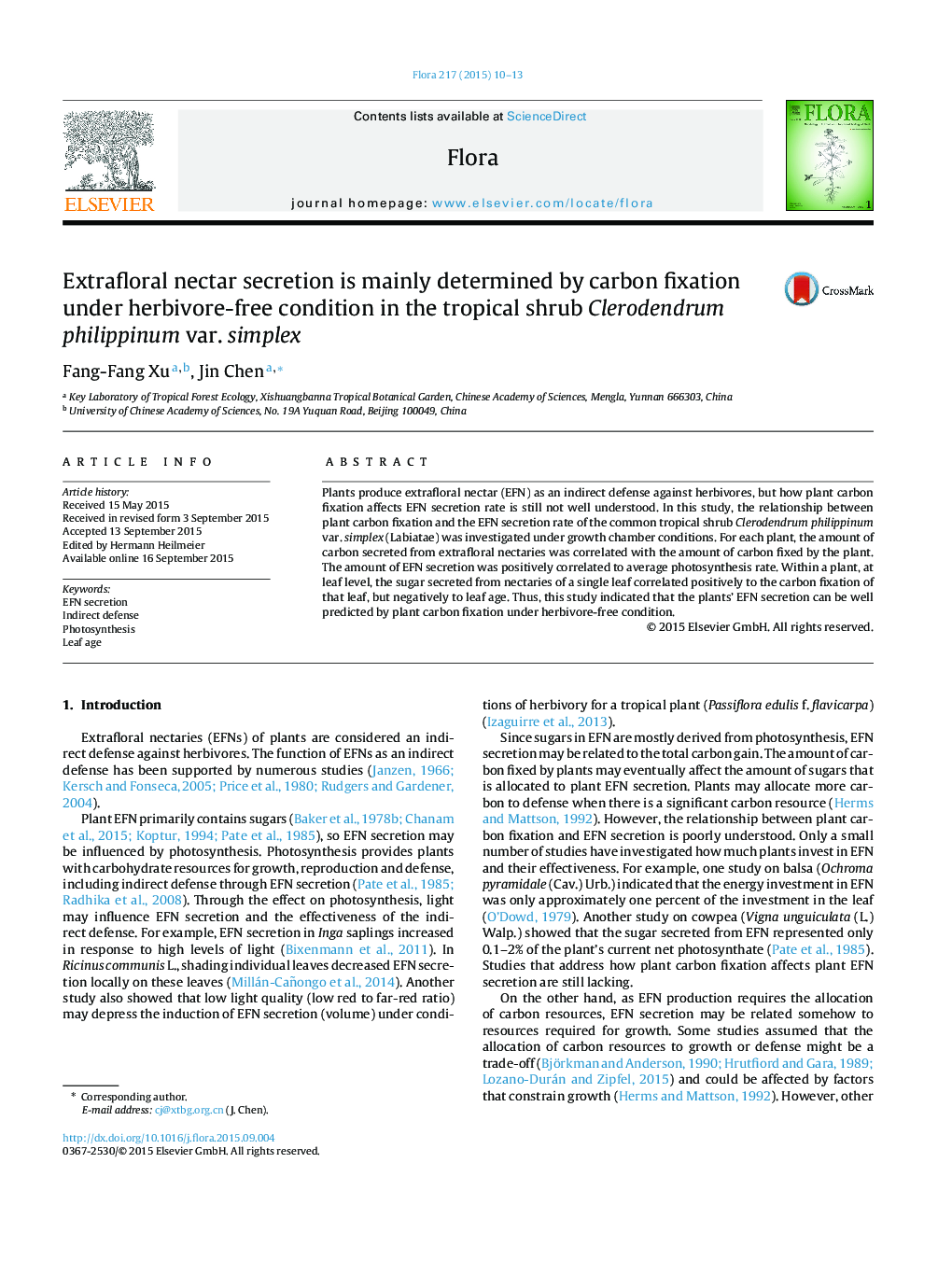| Article ID | Journal | Published Year | Pages | File Type |
|---|---|---|---|---|
| 2179392 | Flora - Morphology, Distribution, Functional Ecology of Plants | 2015 | 4 Pages |
•We studied EFN secretion rate and photosynthesis rate of Clerodendrum philippinum.•EFN secretion is related to the amount of carbon fixation of the plant.•EFN secretion is positively correlated to photosynthesis rate.•At leaf level, EFN secretion is related to the carbon fixation and age of that leaf.
Plants produce extrafloral nectar (EFN) as an indirect defense against herbivores, but how plant carbon fixation affects EFN secretion rate is still not well understood. In this study, the relationship between plant carbon fixation and the EFN secretion rate of the common tropical shrub Clerodendrum philippinum var. simplex (Labiatae) was investigated under growth chamber conditions. For each plant, the amount of carbon secreted from extrafloral nectaries was correlated with the amount of carbon fixed by the plant. The amount of EFN secretion was positively correlated to average photosynthesis rate. Within a plant, at leaf level, the sugar secreted from nectaries of a single leaf correlated positively to the carbon fixation of that leaf, but negatively to leaf age. Thus, this study indicated that the plants’ EFN secretion can be well predicted by plant carbon fixation under herbivore-free condition.
